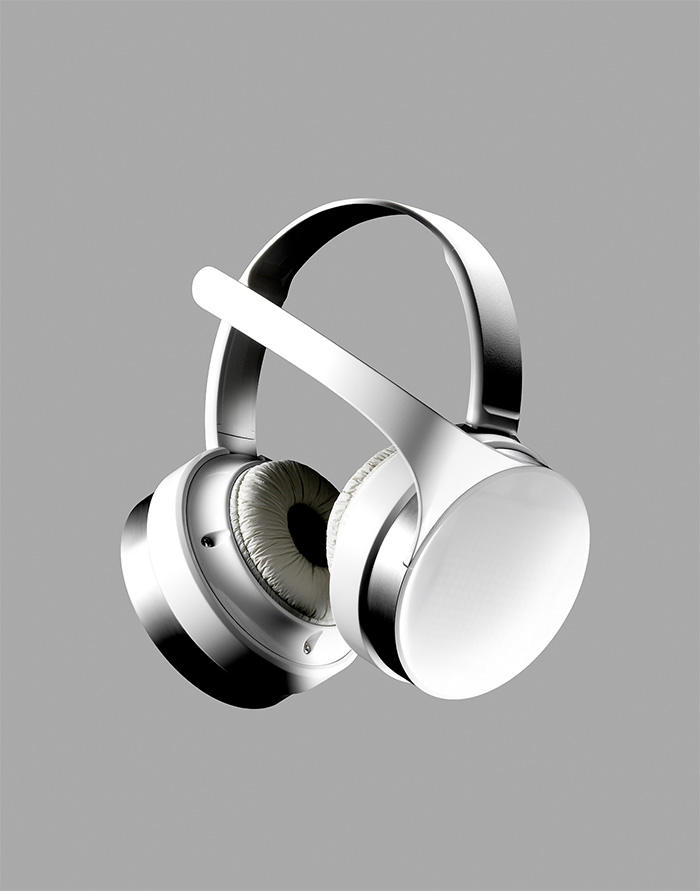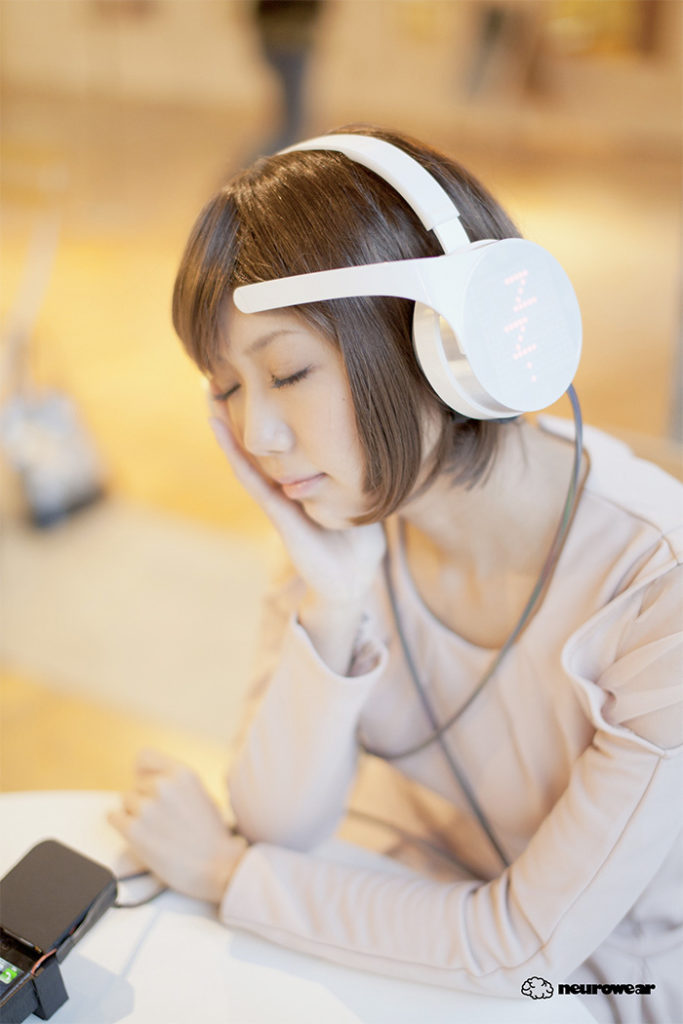Projects / mico
About “mico”
micoはデバイスを装着するだけで、ユーザの脳波の状態にフィットする音楽を選曲するシステムです。
micoシステムは、脳波センサつきヘッドフォンと、iPhone用専用アプリの2つによって構成されています。額の部分にある脳波センサによってユーザの脳波を測定し、アプリケーションが脳波の状態を解析。脳波の状態にフィットする音楽を自動で再生します。
micoによってもたらされる、ユーザの無意識から音楽が選曲される体験を、我々は”Music Serendipity”と名付けています。
また、”mico”とは”music inspiration from your subconsciousness”の略称です。
“mico” frees the user from having to select songs and artists and allows users to encounter new music just by wearing the device.
The mico system is made up of two parts. the mico headphone, and the mico app for iPhone. The mico headphone detects brainwaves through the sensor on your forehead. The mico app then automatically analyzes the user’s condition of the brain,and searches for music that best matches from the mico music data base, and plays the selection that fits the user’s status.
mico provides a new experience which we call “Music Serendipity”, by detecting the users subconsciousness through their brainwaves.
“mico” is short for “music inspiration from your subconsciousness”.
Images
Demo
How it works
現状のプロトタイプでは、100曲の楽曲が登録されています。それぞれの楽曲には、その楽曲を聴いた過去の被験者の脳がどのように反応したかという脳波パターン情報がつけられています。
まずユーザが脳波センサによって脳波を計測すると、ユーザの脳波パターンをいくつかのグループに分類します。分類後、ユーザの脳波を細かく解析し、現在の脳波パターンと、各楽曲が持っている脳波パターンのマッチングを行い、最も近しいパターンを持つ楽曲を再生します。
このシステムの精度は、ユーザ数によって変動します。つまりより多くの人の脳波情報を集めることによって選曲エンジンを学習させていくことができると考えています。
このユニークな選曲アルゴリズムは、慶応義塾大学満倉研究室の満倉靖恵准教授と荻野幹人研究員によって過去15年分の脳波計測データを活用して共同開発されています。
mico music database (prototype) contains 100 songs that have been “neuro-tagged” by testing several people’s brain reaction to those songs. Each song is associated to a set of characteristics modeling that song.
The sensor on the forehead detects and analyzes the user brainwaves, then matches them to the closest “neural pattern” pre-recorded in the database to determine the user “neural group”. After determining the user neural group, the algorithm analyzes the user latest brainwaves to determine a set of music characteristics that will best match the user’s mood. The system then looks up the database to match the user with the song that has the closest neural pattern, and actually plays the song.
The accuracy of the system depends on the number of people using the system, so the matching accuracy will keep improving while the user database grows.
The algorithm was co-developed by neurowear and the Mitsukura Laboratory of Keio University. The main developers of the algorithm are Ms. Mitsukura and Mr. Ogino, respectively Professor and Researcher at the Mitsukura Laboratory.
FAQ
Q:どのように音楽が選曲されるのですか?
A:ユーザの脳波を独自のアルゴリズムによって解析し、音楽データベースとのマッチングを行っています。詳しくは “How it works”をご覧ください。
Q:ヘッドフォンに表示されるマークは何ですか?
A:ユーザの脳波の状態を示しています。現在ユーザの「眠気」「ストレス」「集中度」に連動してマークが表示されます。これらの情報は、ヘッドフォンに「気持ち漏れ」機能を持たせるためのもので、選曲とは直接関係ありません。
Q:アプリケーションに表示される動くパターンは何ですか?
A:ユーザの脳波の状態と強度を表しています。
Q:このアルゴリズムは誰が開発したのですか?
A:ベースとなるアルゴリズムは慶応義塾大学満倉研究室が開発したものです。秘密保持のため、詳細については非公開とさせていただいております。
Q:アルゴリズムについて詳しく知りたいのですが
A:申し訳ありませんが非公開となっています。
Q:販売の予定は?
A:現在開発進行中のため、商品化はいまのところ未定となっております。共同研究、共同開発にご興味をお持ちの音楽配信事業者の方がいらっしゃいましたらぜひご連絡お待ちしております。
Q: How are the songs recommended?
A: The users brainwaves are detected and analyzed by a unique algorithm and then matched to a music database. See “how it works” for details.
Q: What are these “indicators” on the headphone?
A: The indicators represent the users brainwaves. It also represents the status of the brainwaves with an algorithm that detects “drowsiness” “stress” and “focus” too. We do not use these parameters to select the music but to express users mood with headphones.
Q: What are these four patterns on iPhone App?
A: They represent the strength of the 4 characters of detected brainwaves.
Q: Who developed this algorithm? Is this your own algorithm?
A: The algorithm was codeveloped with Keio University in Japan. It is a cutting edge algorithm that is still in stealth.
Q: Can you tell me about the characters / algorithm?
A: Unfortunately, we can’t.
Q: Is this already for sale? When will it go on sale? When will it be released? How much?
A: It is still a concept model and we don’t have any concrete plans to commercialize it yet.
We are looking to partner with music providers and then assess its business model.


